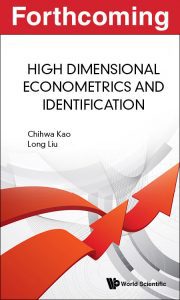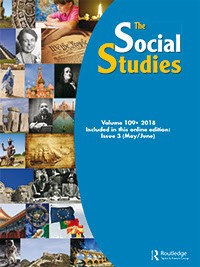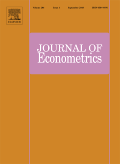 Oskar Harmon and Paul Tomolonis (UConn PhD 2017) co-authored the article “The effects of using Facebook as a discussion forum in an online Principles of Economics course: Results of a randomized controlled trial”
Oskar Harmon and Paul Tomolonis (UConn PhD 2017) co-authored the article “The effects of using Facebook as a discussion forum in an online Principles of Economics course: Results of a randomized controlled trial”
Their paper makes a comparison between using social media or traditional Course Management System (CMS) discussion groups in a fully online Principles of Microeconomics course.
Students were randomly assigned to a discussion forum in either Facebook or CMS to discern a difference in the level of engagement and learning outcomes. The popular hypothesis is that students using social media have greater engagement with the class and higher learning outcomes relative to students using a CMS platform. Reasons for the positive effect include the ease of use and student familiarity with social media, which allows them to make more connections and gain a deeper understanding of the course material through discussions with others.
Contrary to the widely held view, the results of this study suggest that participation in the treatment Facebook group is associated with declining student engagement and a reduction in the semester course average of 3 to 5 points on a 100-point scale.
The article is available at the IREE website
 High Dimensional Econometrics and Identification
High Dimensional Econometrics and Identification Professor Subhash Ray’s paper THE TRANSFORMATION FUNCTION, TECHNICAL EFFICIENCY, AND THE CCR RATIO is forthcoming in a special issue of European Journal of Operational Research commemorating the introduction of Data Envelopment Analysis (DEA) into the Operations Research/Management Science literature forty years back by Charnes, Cooper, and Rhodes (CCR). European Journal of Operational Research is a highly rated peer reviewed journal with an impact factor of 3.426 and a 5-year impact factor 0f 3.96.
Professor Subhash Ray’s paper THE TRANSFORMATION FUNCTION, TECHNICAL EFFICIENCY, AND THE CCR RATIO is forthcoming in a special issue of European Journal of Operational Research commemorating the introduction of Data Envelopment Analysis (DEA) into the Operations Research/Management Science literature forty years back by Charnes, Cooper, and Rhodes (CCR). European Journal of Operational Research is a highly rated peer reviewed journal with an impact factor of 3.426 and a 5-year impact factor 0f 3.96. Smirnova’s article
Smirnova’s article  Professor Alexander Vaninsky, a long-time economics instructor at the Stamford Campus, recently published the article “Energy-environmental efficiency and optimal restructuring of the global economy” in the journal Energy (June 2018).
Professor Alexander Vaninsky, a long-time economics instructor at the Stamford Campus, recently published the article “Energy-environmental efficiency and optimal restructuring of the global economy” in the journal Energy (June 2018). Professor David Simon and PhD student Mark McInerney have published “The Earned Income Tax Credit, Poverty, And Health” with co-author Sarah Goodell.
Professor David Simon and PhD student Mark McInerney have published “The Earned Income Tax Credit, Poverty, And Health” with co-author Sarah Goodell. Professor Jungbin Hwang’s paper “Should We Go One Step Further? An Accurate Comparison of One-step and Two-step Procedures in a Generalized Method of Moments Framework”, co-authored with Yixiao Sun, has been accepted for publication in the Journal of Econometrics, one of the top scholarly journals in theoretical econometrics. The paper started as a third-year paper project when Professor Hwang was a graduate student in the University of California, San Diego.
Professor Jungbin Hwang’s paper “Should We Go One Step Further? An Accurate Comparison of One-step and Two-step Procedures in a Generalized Method of Moments Framework”, co-authored with Yixiao Sun, has been accepted for publication in the Journal of Econometrics, one of the top scholarly journals in theoretical econometrics. The paper started as a third-year paper project when Professor Hwang was a graduate student in the University of California, San Diego.